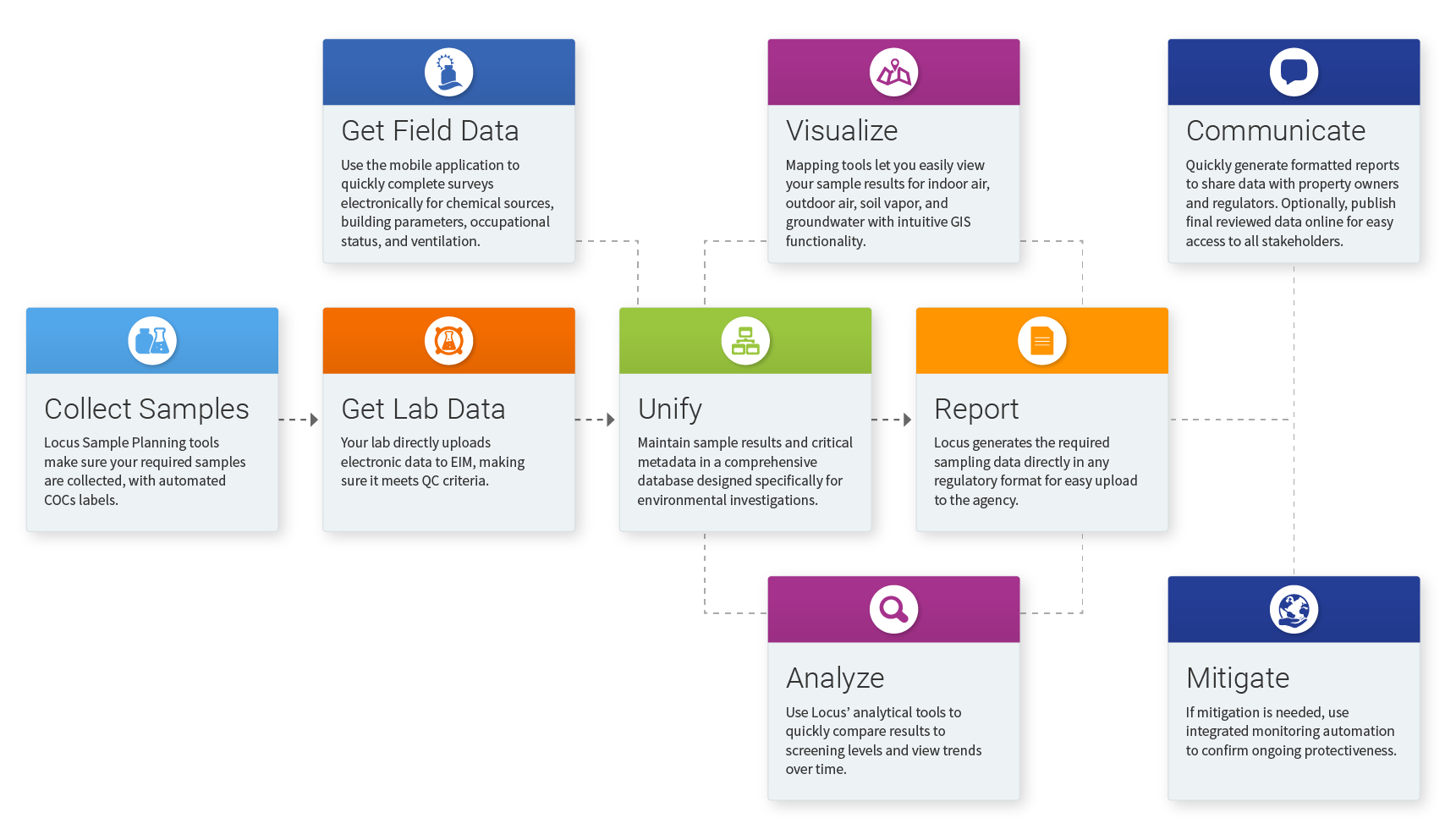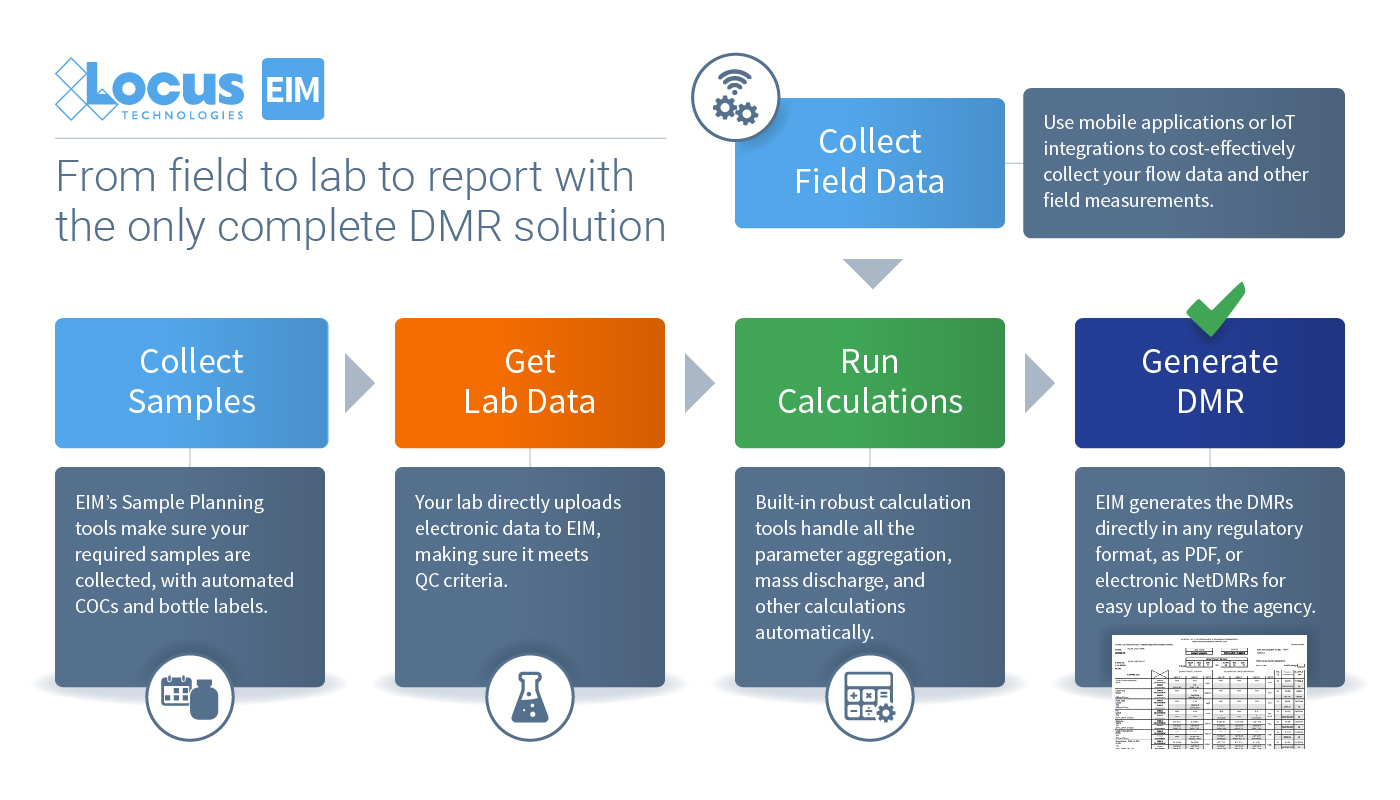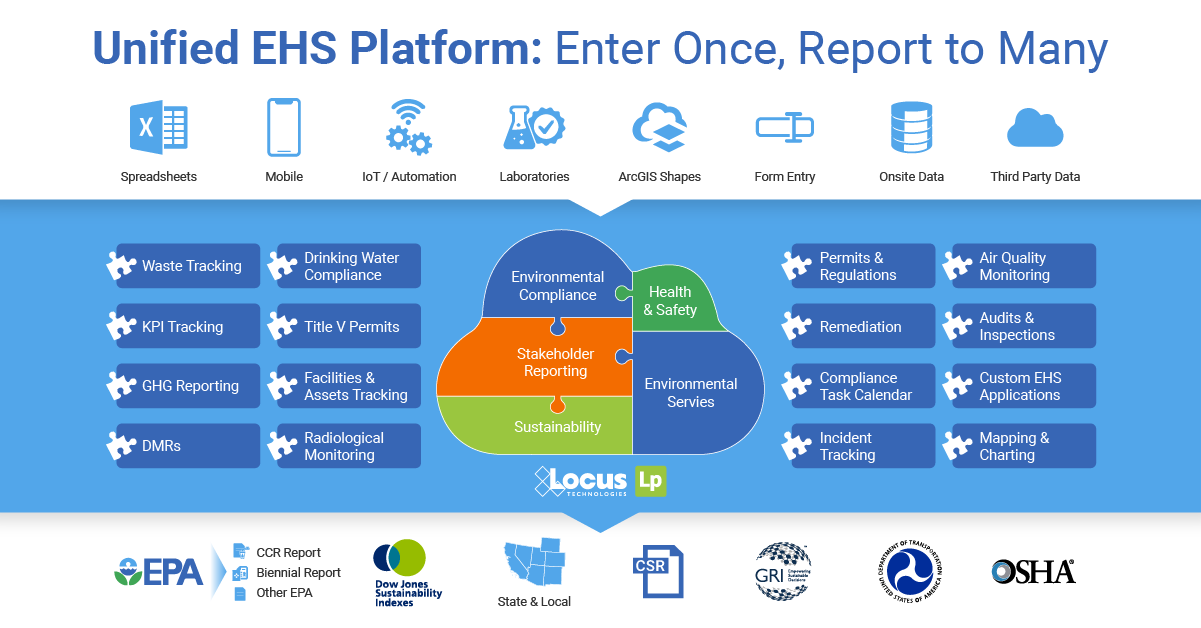The Locus Technologies ESG Survey Tool
The Locus Technologies ESG Survey Tool enables users to email surveys and questionnaires directly from Locus to their supply chain. This is achieved without having to create usernames and credentials those receiving surveys.
When surveys are issued, the tool generates a secure link to each email recipient. Email recipients click the link, respond to the survey or questionnaire (without having to create a Locus username/password), and the data will be captured within Locus software for ESG purposes. Recipients of the link only receive access to their survey form, and nothing else in the system, and the links expire within a prescribed timeframe to further strengthen security.
The survey tool securely streamlines data collection from external entities who would traditionally never be given access to the system, including suppliers, vendors, sales channels and consultants. Once collected, the data can be immediately be used for ESG calculations and reporting.
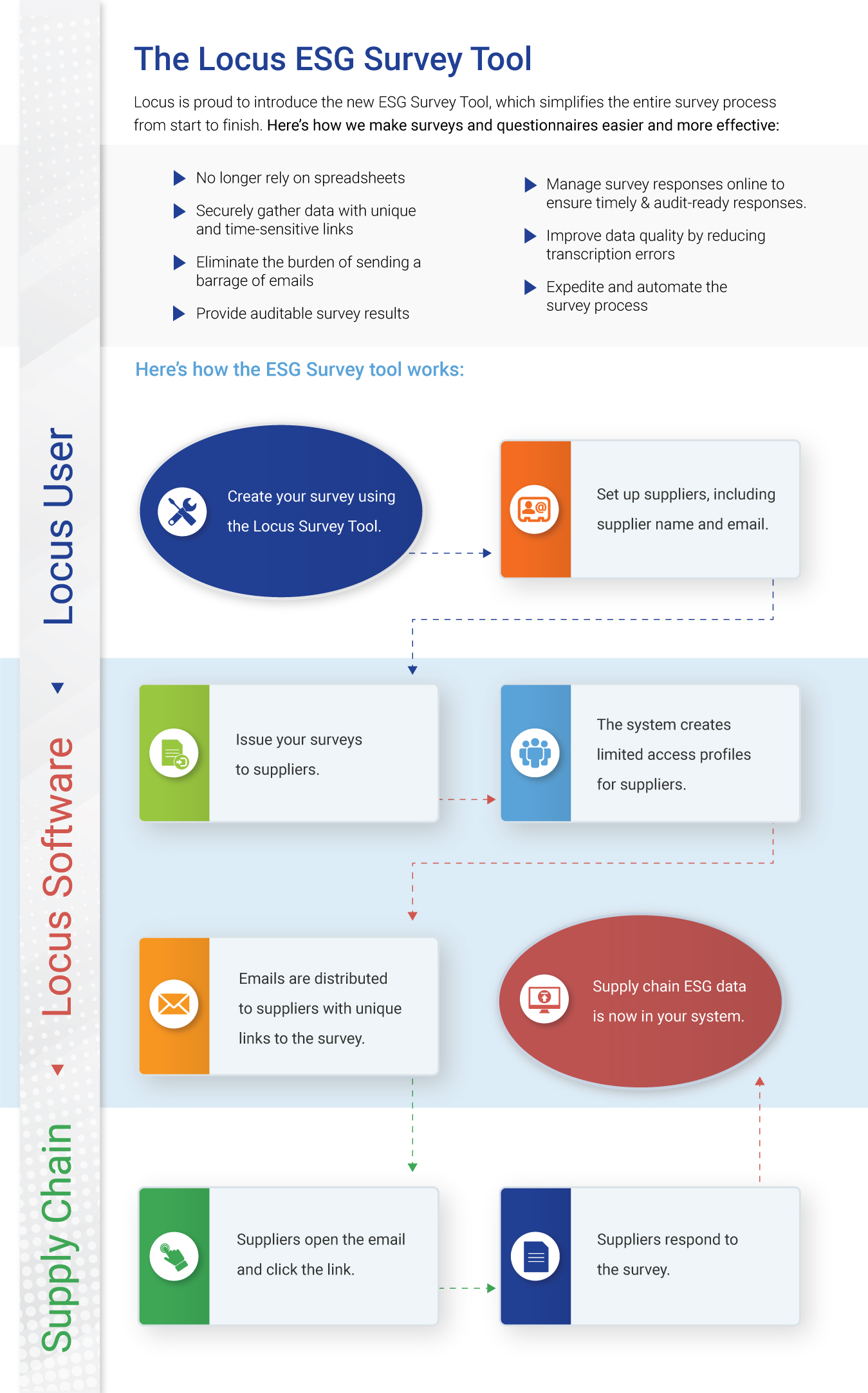
Automate Your Vapor Intrusion Management
The Vapor Intrusion tools in Locus’ Environmental Information Management (EIM) software solve the problem of time-consuming monitoring, reporting, and mitigation by automating data assembly, calculations, and reporting.
Quickly and easily generate validated reports in approved formats, with all of the calculations completed according to your specific regulatory requirements. Companies can set up EIM for its investigation sites and realize immediate cost and time savings during each reporting period.
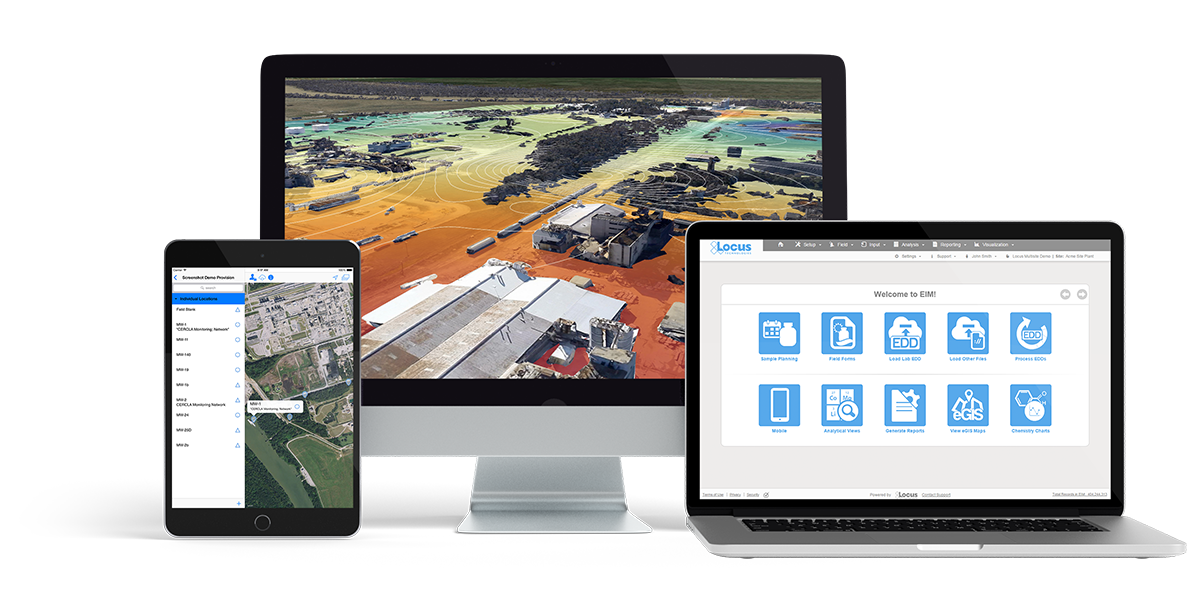
5 Ways to Manage Your Hazardous Waste
The Locus Waste Management application enables EHS professionals to manage wastes across their entire enterprise and prepare reports with just one click.
Streamline and Simplify Annual CCR Preparation
Streamline and simplify annual CCR preparation with Locus water quality software—designed for water systems to simplify the sampling, management, and reporting of drinking water data.
Streamline and Save on Your Title V Reporting
Simplify your air quality data management and reporting with Locus’ unified software solution. Our Air Quality application resolves most common issues with managing and submitting your site emissions data.
How to Prepare for EPA’s Latest UCMR 5 Guidelines
Attention all water providers: the EPA’s UCMR 5 list includes 30 contaminants (29 PFAS and lithium) that both small and large water systems have to test for and report. Can your current environmental solution handle it?
Locus EIM environmental software can handle new chemicals and analyses seamlessly. Both the standard Locus EIM configuration and the Locus EIM Water configuration (specially tailored to water utilities) are built with ever-changing regulations in mind.
We’ve put together some helpful background and tips for water providers preparing for UCMR 5 monitoring.
What water providers need to know
- The fifth and latest list (UCMR 5) was published on March 11, 2021, and includes 30 new chemical contaminants that must be monitored between 2023 and 2025 using specified analytical methods.
- SDWA now requires that UCMR include all large PWSs (serving >10,000 people), all PWSs serving between 3,300 and 10,000 people, and a representative sample of PWSs serving fewer than 3,300 people.
- Large systems must pay for their own testing, and US EPA will pay for analytical costs for small systems.
- Labs must receive EPA UCMR approval to conduct analyses on UCMR 5 contaminants.
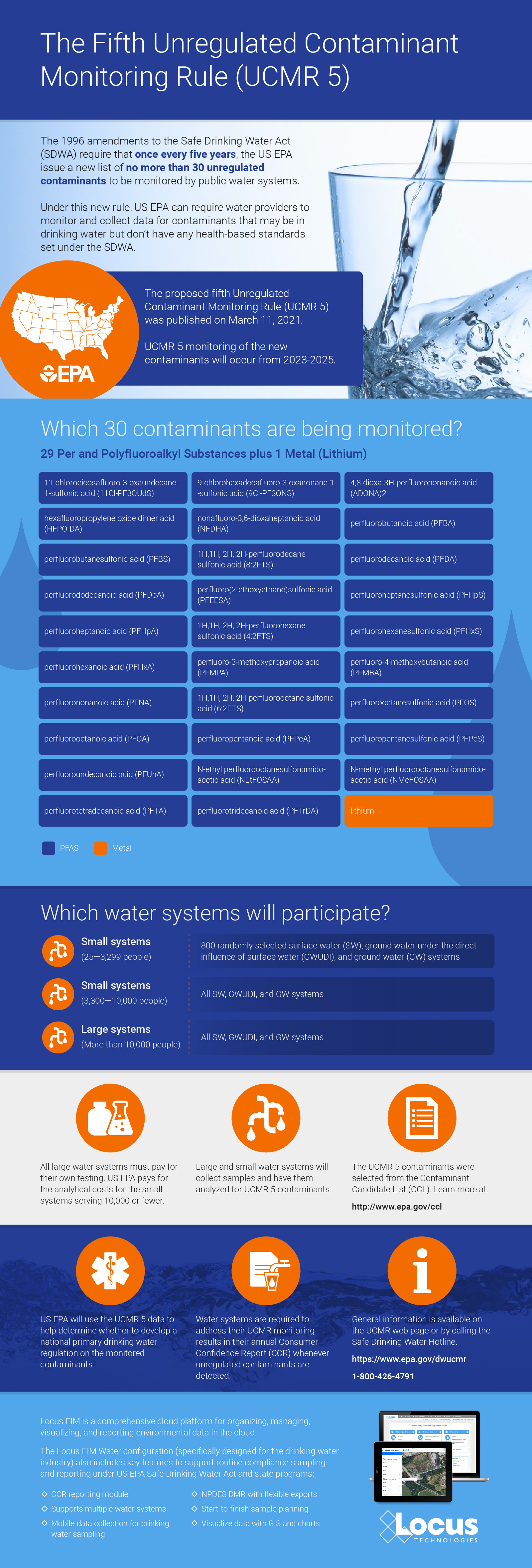
What’s the UCMR and why are some contaminants unregulated?
In 1996, Congress amended the Safe Drinking Water Act with the Unregulated Contaminant Monitoring Rule (UCMR). Under this new rule, US EPA can require water providers to monitor and collect data for contaminants that may be in drinking water but don’t have any health-based standards set (yet) under the SDWA.
More than 150,000 public water systems are subject to the SDWA regulations. US EPA, states, tribes, water systems, and the public all work together to protect the water supply from an ever-growing list of contaminants.
However, under the UCMR, US EPA is restricted to issuing a new list every five years of no more than 30 unregulated contaminants to be monitored by water providers.
This helps reduce the burden on water providers, since monitoring and testing for the existing long list of regulated contaminants already requires a significant investment of time and resources.
Throughout the course of this monitoring, US EPA can determine whether the contaminants need to be officially enforced— but this would require regulatory action, routed through the normal legislative process.
Tips for managing UCMR in 
- DO use EIM’s Sample Planning module to set your sample collection schedule ahead of time, as requirements vary and are on specific schedules
- DO take advantage of EIM’s sample program features to track and manage UCMR data, or consider using a dedicated location group to track results, keeping them separate and easy to find for CCR reporting.
- DON’T worry about adding in new analytical parameters in advance. With EIM’s EDD loader, you can automatically add them when the data arrive from the laboratory.
Contact your Locus Account Manager for help setting up your EIM database in advance of your sampling schedule, and we’ll make sure you’re equipped for UCMR 5!
Not yet a customer? Send us a quick note to schedule a call or a demo to find out how Locus software can completely streamline your water sampling and reporting.
More helpful links:
- Locus adds Consumer Confidence Report (CCR) module to Locus EIM Water
- Improving arsenic detection and keeping it out of drinking water
- Making water quality data more transparent: Lessons from an annual water quality report
- Water quality data management: 10 best practices
Streamline and Save on Your DMR Reporting
The DMR tool in Locus’ Environmental Information Management (EIM) software solves the problem of time-consuming, labor-intensive, and expensive manual report generation by automating the data assembly, calculations, and formatting of Discharge Monitoring Reports. Depending on the type of discharge and the regulatory jurisdiction, you may be required to report information such as analytical chemistry of pollutants, flow velocity, total maximum daily load, and other parameters. For companies that report on multiple facilities, producing a DMR also becomes a major expense.
Thanks to Locus’ DMR tool, companies can generate DMRs within minutes with validated data in approved formats, with all of the calculations completed according to regulatory requirements. Companies can set up EIM for its permitted facilities and realize immediate cost and time savings during each reporting period. Locus users have saved over $2,000,000 on DMR reporting.
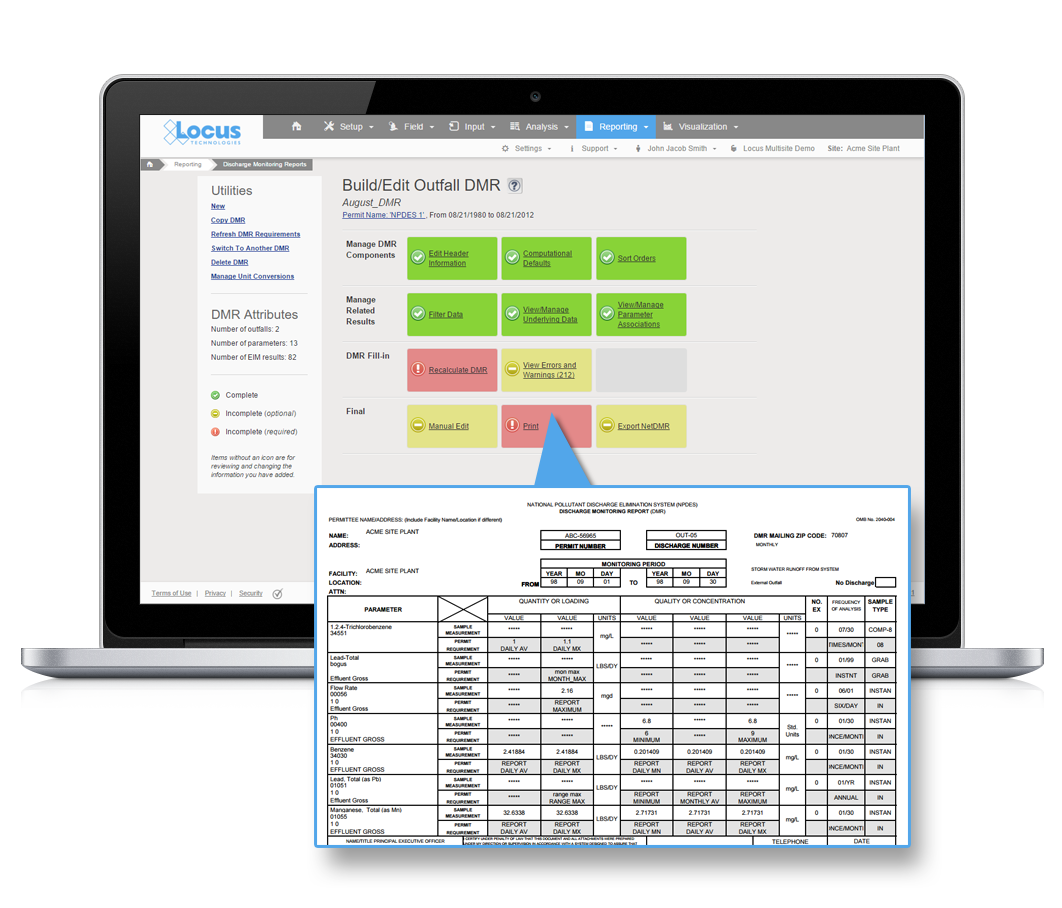
Locus continues to enhance the Discharge Monitoring Report (DMR) tool, recently implementing calculations needed to handle reporting of divalent metals. New formats, such as Florida DEP ezDMR, are regularly being added, so customers can meet their reporting requirements.
5 Ways To Save With Locus
For over 20 years, Locus environmental software customers have saved enormously on their setup and and data entry costs. This infographic highlights the aggregate savings of all users based on conservative estimates of time and cost for different aspects related to our software.
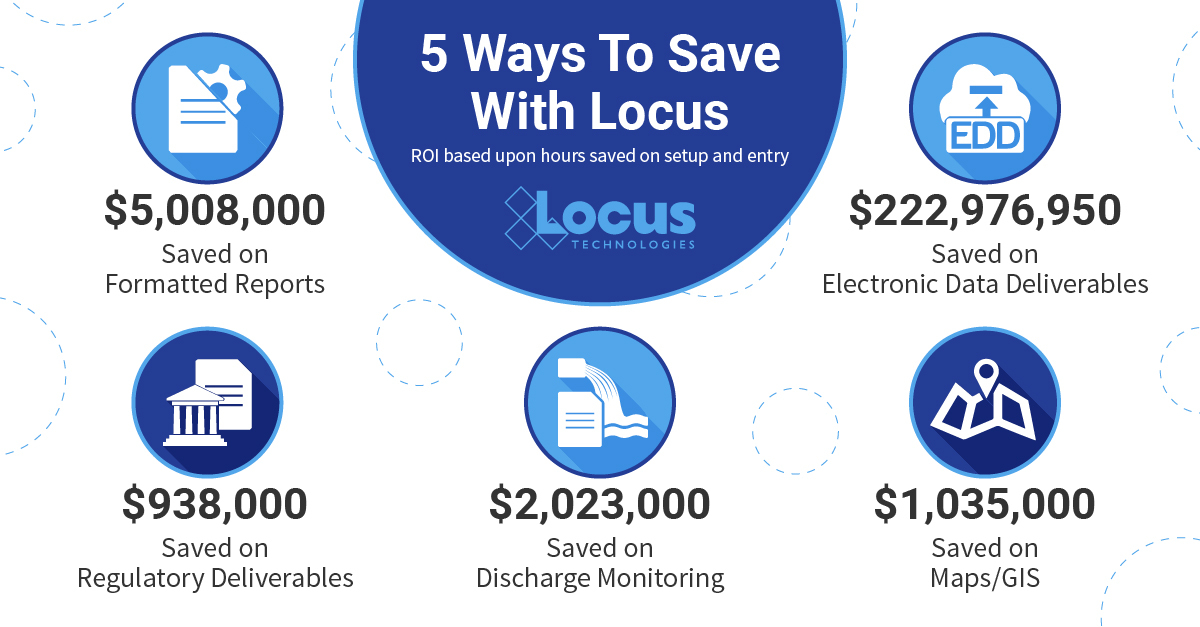
Unified EHS Platform: Enter Once, Report to Many
Is your organization still using multiple software systems for EHS&S when you can (and should) be using one robust and unified platform? Unify your compliance, sustainability, water, air, and environmental data with Locus’ cloud platform for EHS&S. It’s easier, cheaper, and more efficient.
With Locus Platform, you can easily and securely feed all of your different EHS data sources to the cloud via a wide array of import options. You will then be able to analyze and report to virtually any regulatory agency, meeting any specific requirements they may have. We believe in making EHS compliance simpler.
Locus Technologies » Infographic
Locus Technologies
299 Fairchild Drive
Mountain View, CA 94043
P: +1 (650) 960-1640
F: +1 (415) 360-5889
Locus Technologies provides cloud-based environmental software and mobile solutions for EHS, sustainability management, GHG reporting, water quality management, risk management, and analytical, geologic, and ecologic environmental data management.

